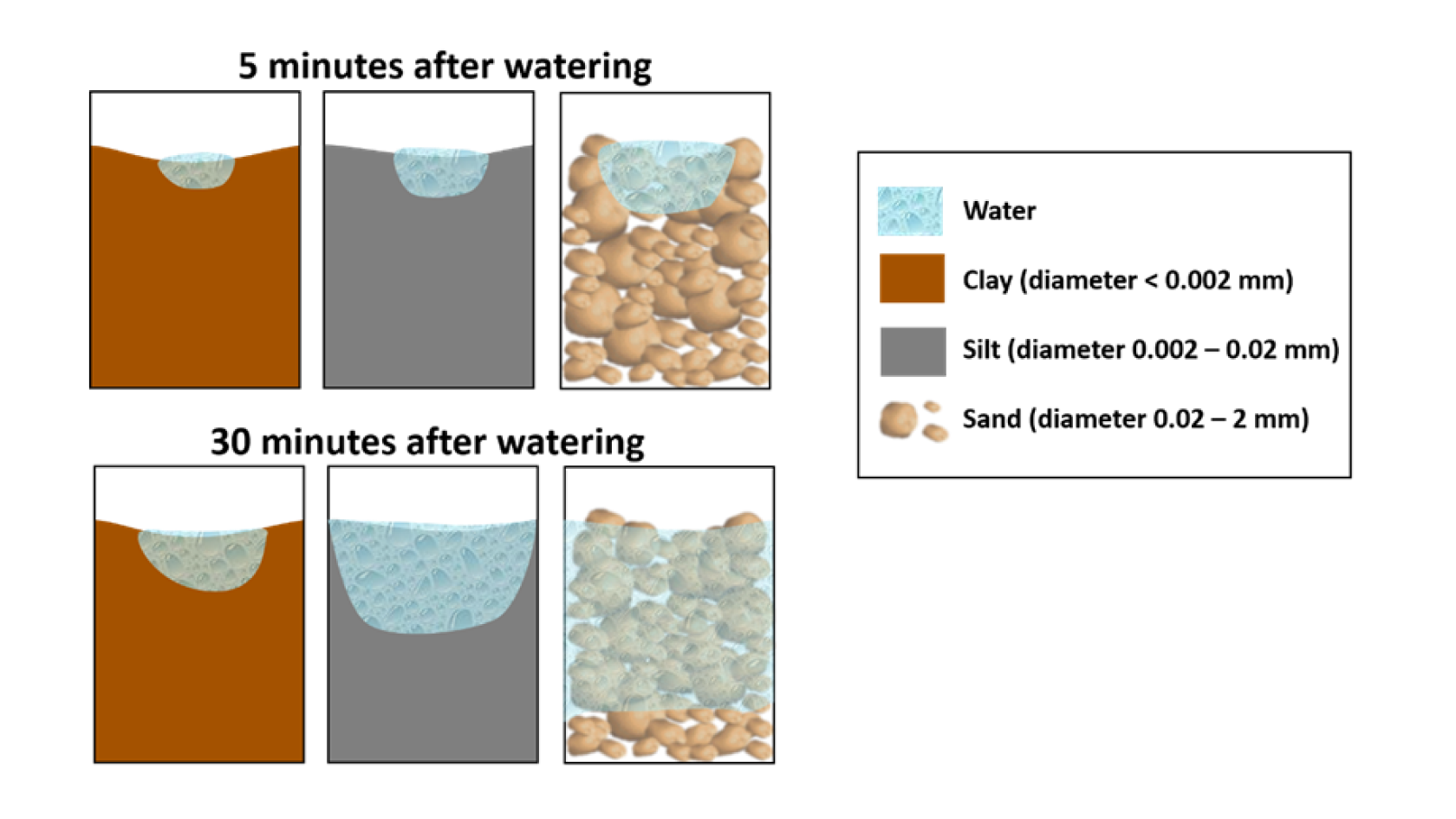Basically, the soil is composed of mineral particles, organic matter, water and air. The mineral particles define the soil texture according to its diameter size: clay = less than 0.002 mm, silt = 0.002 to 0.02 mm and sand = 0.02 to 2 mm. The proportion of those elements defines the CEC from clay that is strongly charged negatively presenting a high capacity to attract and hold cations, to pure sand that has the lowest CEC. Due to this, the characteristics of your soil will be taken into account for the elaboration of an optimal fertilization plan for your crops, when using the i-Plant Nutrition. The combination of those three mineral particles will form the next types of soils:
 2. Guide to understand what happens
underground
The differences between soils will be mainly affected by the water retention capacity that they may have
in any case and the presence of air pores after watering. The water penetration in pure clay is so slow
(<0.13 cm per hour) that has difficult habitability. However, when in major proportion but mixed with
other types of soil, the recommendation would be to apply small water volume in a long time period so it
can properly drain. Soils with a predominance of clay take time to dry after getting wet and can
saturate all the soil pore spaces. Its tendency to compact hinders seedling emergence, root growth and
plant reproduction.
2. Guide to understand what happens
underground
The differences between soils will be mainly affected by the water retention capacity that they may have
in any case and the presence of air pores after watering. The water penetration in pure clay is so slow
(<0.13 cm per hour) that has difficult habitability. However, when in major proportion but mixed with
other types of soil, the recommendation would be to apply small water volume in a long time period so it
can properly drain. Soils with a predominance of clay take time to dry after getting wet and can
saturate all the soil pore spaces. Its tendency to compact hinders seedling emergence, root growth and
plant reproduction.
On the contrary, water can fluently go through sandy soil (12.7 to 25.4 cm per hour) which eludes water accumulation. The water flow quickly washes the nutrients which reduce the capacity of the plants to absorb them. This type of soil is also prone to rapidly drying out, causing serious damage to plants health when drought is persistent.
Loam soil presents an equilibrate proportion of sand and silt, with a small percentage of clay. This combination provides optimal aeration, nutrient retention and moisture retention for the best plant growth. Together with the fertilization advice you can obtain using the i-Plant Nutrition, your crops would give you the greatest benefits.
 3. How to improve the soil
features?
Even if climatic factors affect the interaction between plants and water, the type of soil is also
decisive for the plant available water. Soil factors such as texture are difficult to modify. However,
improvements to its structure can be made, for example by manipulating the pore size distribution, which
modulates water drainage, total water storage and water holding capacity. This soil structural porosity
can be for example improved by adding organic matter.
3. How to improve the soil
features?
Even if climatic factors affect the interaction between plants and water, the type of soil is also
decisive for the plant available water. Soil factors such as texture are difficult to modify. However,
improvements to its structure can be made, for example by manipulating the pore size distribution, which
modulates water drainage, total water storage and water holding capacity. This soil structural porosity
can be for example improved by adding organic matter.
Evaluation of the type of soil you are working with, together with an analysis of its morphology and soil resource inventories, you will be able to better handle your land with the highest efficiency.





